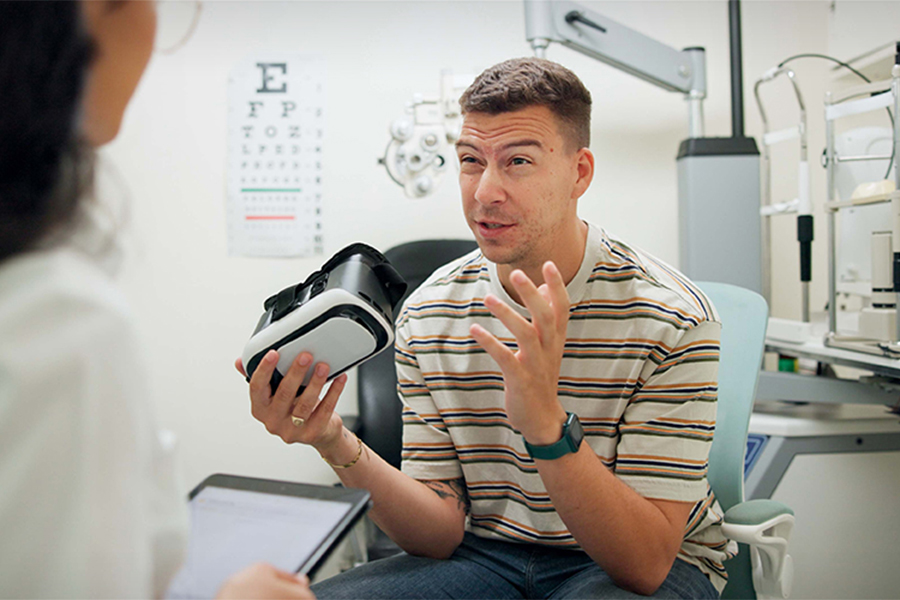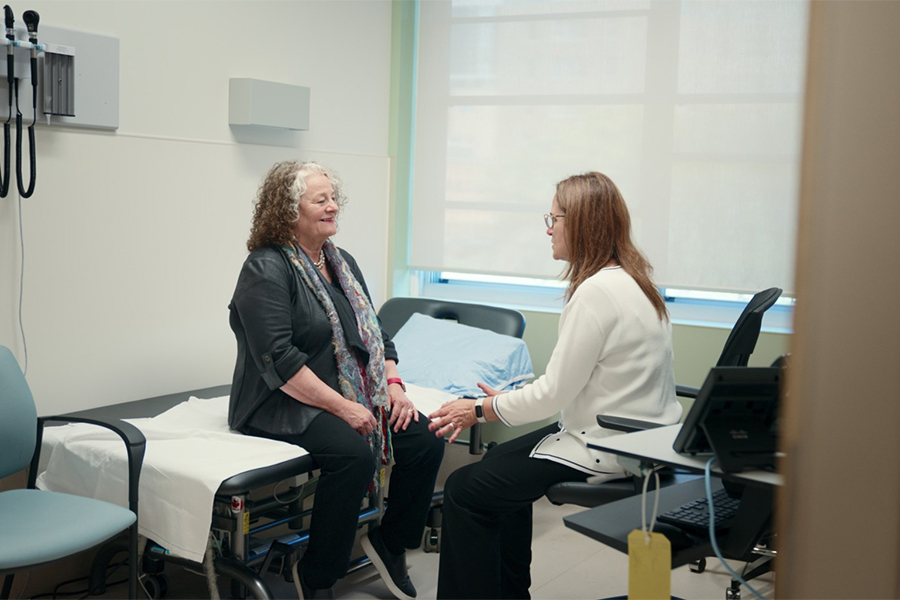Asia Naiman, a nurse on the Special Dementia Unit at Toronto Rehab, University Centre, uses an iPad that connects to wristbands worn by patients to monitor their locations across the unit. (Photo: UHN)
For nurses on Toronto Rehab’s Specialized Dementia Unit (SDU) – where research and patient care go hand-in-hand – the ability to monitor patient mobility has always been high priority.
That’s mainly because the SDU at Toronto Rehab, University Centre cares for older adults with behavioural and psychological symptoms of dementia, and these patients tend to wander widely throughout the unit and can sometimes intrude into the private rooms of others.
Now, a new study is underway on the use of technology to help nurses on the SDU monitor their patients’ whereabouts, contributing to a more person-centred and individualized approach to care.
The study involves new wearable wristband technology that is worn by patients on the SDU to collect real-time location data, that is, information about where they are on the unit at any given moment. This information is then collected by beacons mounted across the halls that gets sent to an iPad, where nurses can see the patient’s location on a map.
“It’s really helped us locate a patient when we need them,” says Asia Naiman, a nurse who works on the SDU. “It’s much more efficient taking a quick look at an iPad and to see a patient’s location, rather than walking across the unit and potentially letting a situation escalate.”
The wristbands also allow health care professionals to address potentially risky situations before they escalate. For example, some patients with dementia can become distressed when others enter their rooms, and this can lead to agitation or altercations.
‘This project has changed the lives of our patients’
And the benefits of this technology don’t end there. The wearable technology can also help researchers understand how patients interact with their environment, how and where they spend their time, and other patterns of behaviour.
Dr. Andrea Iaboni, Medical Director for the SDU and lead scientist in the Dementia Rehab Group, says a key goal of the study is to help monitor clinical outcomes.
“We’re hoping we can use the data collected by these wristbands to measure individual patterns of behaviour over time,” she says. “That way we can see how they’re responding to the interventions we’re using on the unit.”
One example would be for monitoring a patient who is getting too much exercise from pacing excessively across the unit.
“We learned that some patients were walking 14 to 16 kilometers a day, which is over 100 loops of the unit,” says Dr. Iaboni. “We were concerned about the amount of energy they were using, so we used that information to implement dietary changes and other strategies to encourage them to sit and take breaks.”
The technology is not only used on patients, but also on equipment and activities. Therapeutic items such as dolls and personal equipment such as walkers all tend to go missing on the unit, so tags were put on them to that nurses could find them when needed.
“This project has changed the lives of our patients,” says Asia.
“The unit is safer for them, and we’re able to care for each one more effectively, all while maintaining staff productivity.”
September is World Alzheimer’s Month, which aims to raise awareness and challenge the stigma surrounding Alzheimer’s disease and dementia. Sept. 21 is World Alzheimer’s Day.


